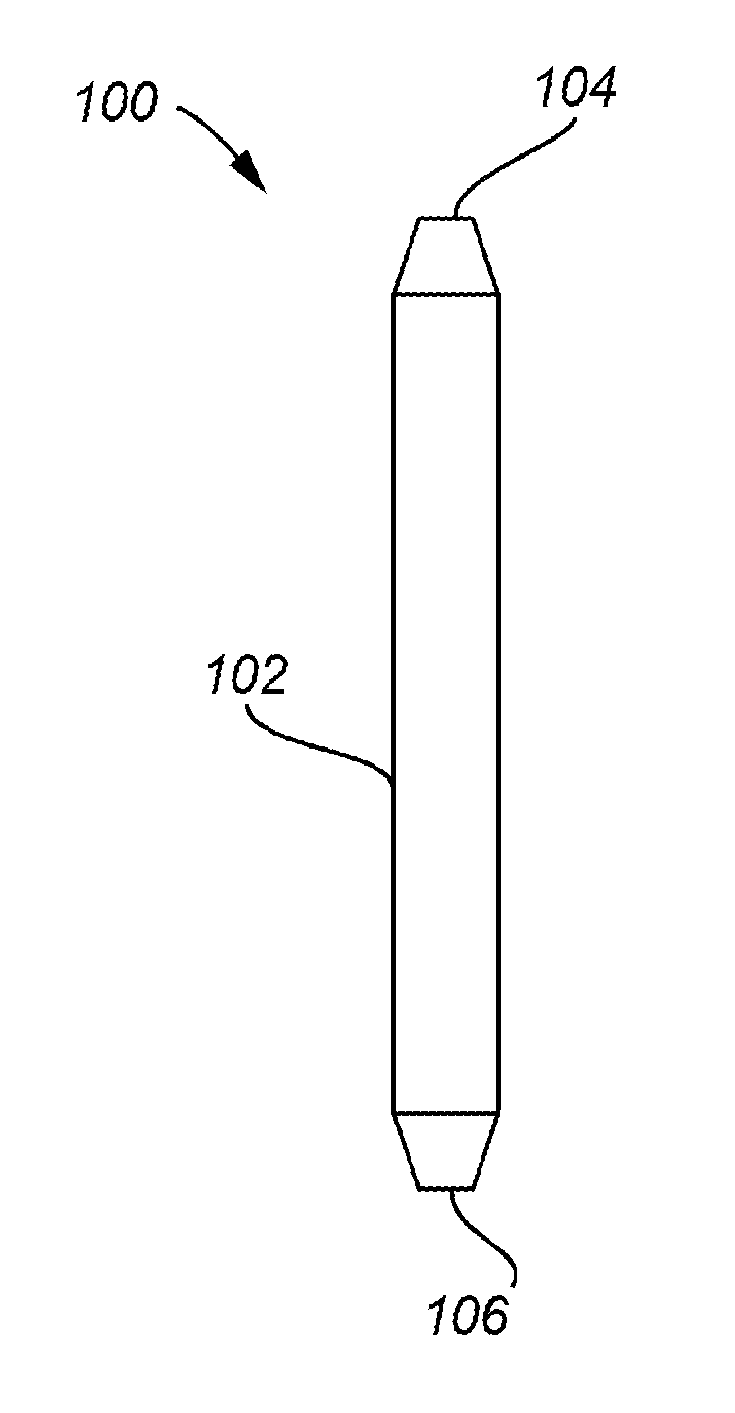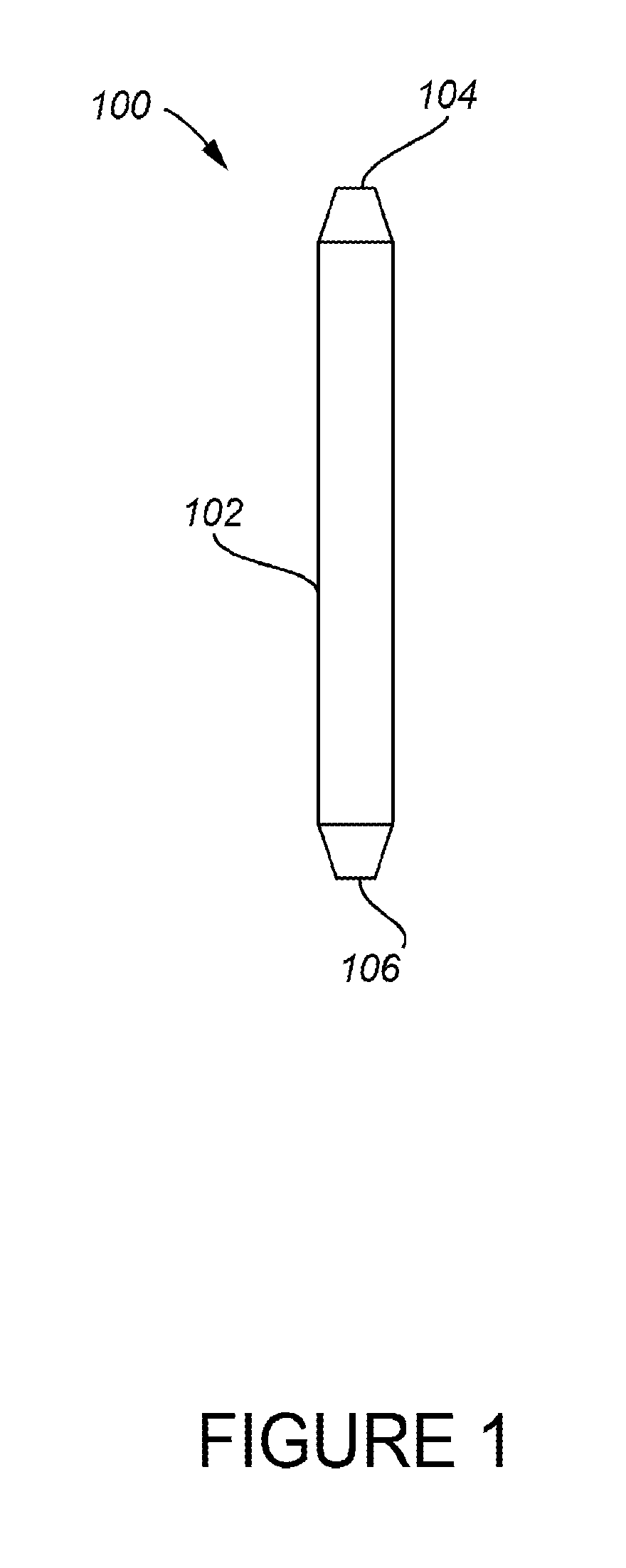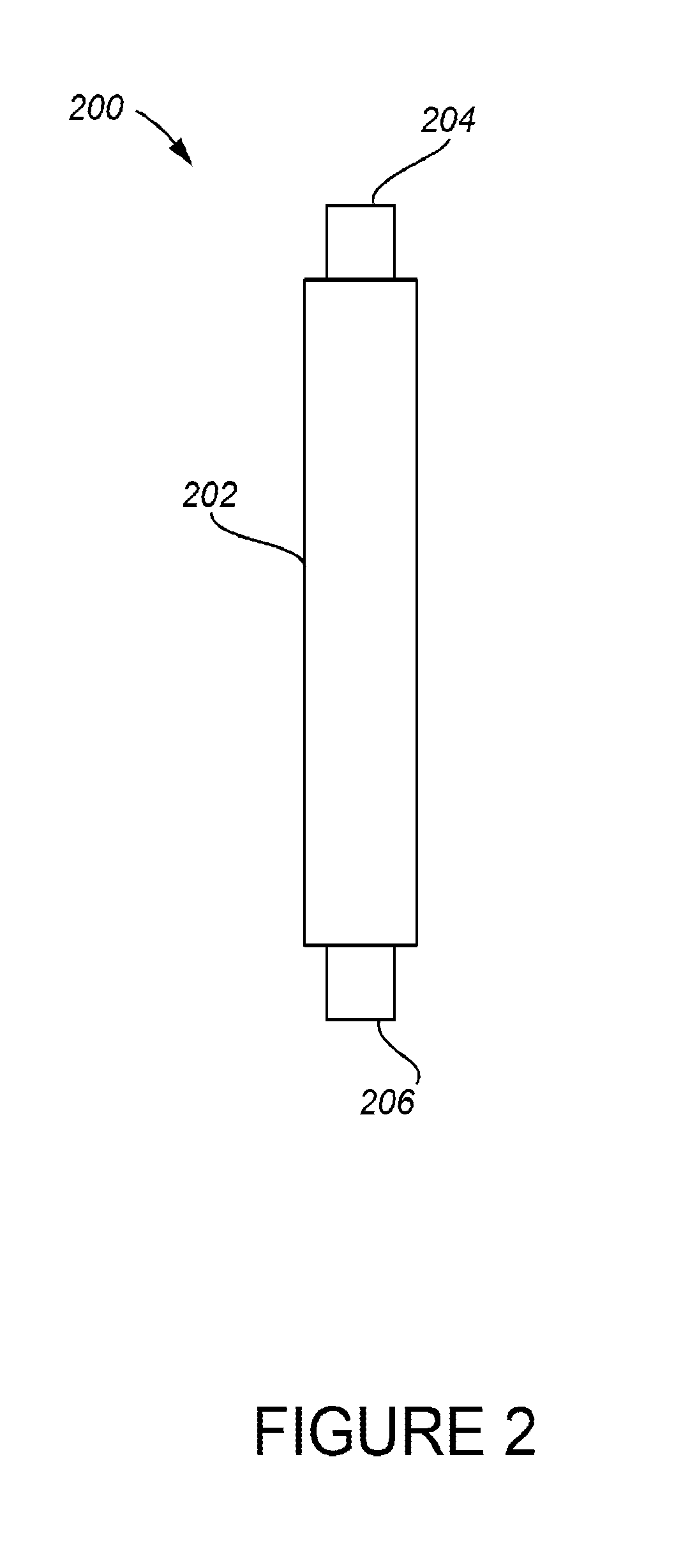Sintered porous plastic plug for serological pipette
a technology of porous plastic and serological pipettes, which is applied in the field of serological pipettes, can solve the problems of insufficient aerosol barrier of cotton plugs, inability to manufacture cylindrical serological pipettes that employ sintered porous plastic plugs, and inability to meet the requirements of fast speed insertion methods, so as to reduce the potential for serological pipettes and plug tearing and/or bending, facilitate the manufacture or assembly of serological pipettes, and reduce the effect of plug tearing
- Summary
- Abstract
- Description
- Claims
- Application Information
AI Technical Summary
Benefits of technology
Problems solved by technology
Method used
Image
Examples
example 1
Production of a Sintered Porous Plastic Plug for a Filtered Serological Pipette
[0069]HDPE particles having an average size of 320 μm are obtained from LyondellBasell. The HPDE particles are mixed to make a homogeneous powder blend. The homogeneous powder blend of 100% (weight) polyethylene particles is disposed in a mold and sintered at a temperature of 170° C. for about 3 minutes to produce a sintered porous plastic plug comprising a cylindrical porous body, a first end and a second end, the first end having a cross-sectional area about 50-70% less than the cross-sectional area of the body, and the second end having a cross-sectional area about 50-70% less than the cross-sectional area of the body. The sintered porous plastic plug has an average pore size of about 78 μm and a porosity of about 45%. Moreover, the sintered porous plastic plug has an overall length of about 1 cm.
example 2
Production of a Sintered Porous Plastic Self-Sealing Plug for a Filtered Serological Pipette
[0070]HDPE particles having an average size of 320 μm are obtained from LyondellBasell. CMC particles with average particle size of 150 microns are obtained from TicGums Inc., White Marsh, Md., US. The CMC and HPDE particles are mixed to make a homogeneous powder blend. The homogeneous powder blend of 90% (weight) polyethylene particles and 10% CMC particles is disposed in a mold and sintered at a temperature of 170° C. for about 3 minutes to produce a sintered porous plastic plug comprising a cylindrical porous body, a first end and a second end, the first end having a cross-sectional area about 50-70% less than the cross-sectional area of the body, and the second end having a cross-sectional area about 50-70% less than the cross-sectional area of the body. The sintered porous plastic plug has an average pore size of about 78 μm and a porosity of about 45%. Moreover, the sintered porous plas...
example 3
Production of a Sintered Porous Plastic Self-Sealing Plug for a Filtered Serological Pipette
[0071]UHMWPE particles having an average size of 120 μm were obtained from Ticona, Florence, Ky., US. CMC particles with average particle size of 150 microns were obtained from TicGums Inc., White Marsh, Md., US. The CMC and UHMWPE particles were mixed to make a homogeneous powder blend. The homogeneous powder blend of 90% (weight) UHMWPE particles and 10% CMC particles was disposed in a mold and sintered at a temperature of 180° C. for about 5 minutes to produce a sintered porous plastic plug comprising a porous body, a first end and a second end, the first end having a cross-sectional area about 50-70% less than the cross-sectional area of the body, and the second end having a cross-sectional area about 50-70% less than the cross-sectional area of the body. The sintered porous plastic plug had an average pore size of about 17 μm and a porosity of about 31%. Moreover, the sintered porous pla...
PUM
| Property | Measurement | Unit |
|---|---|---|
| pressure | aaaaa | aaaaa |
| length | aaaaa | aaaaa |
| water intrusion pressure | aaaaa | aaaaa |
Abstract
Description
Claims
Application Information
 Login to View More
Login to View More - R&D
- Intellectual Property
- Life Sciences
- Materials
- Tech Scout
- Unparalleled Data Quality
- Higher Quality Content
- 60% Fewer Hallucinations
Browse by: Latest US Patents, China's latest patents, Technical Efficacy Thesaurus, Application Domain, Technology Topic, Popular Technical Reports.
© 2025 PatSnap. All rights reserved.Legal|Privacy policy|Modern Slavery Act Transparency Statement|Sitemap|About US| Contact US: help@patsnap.com



